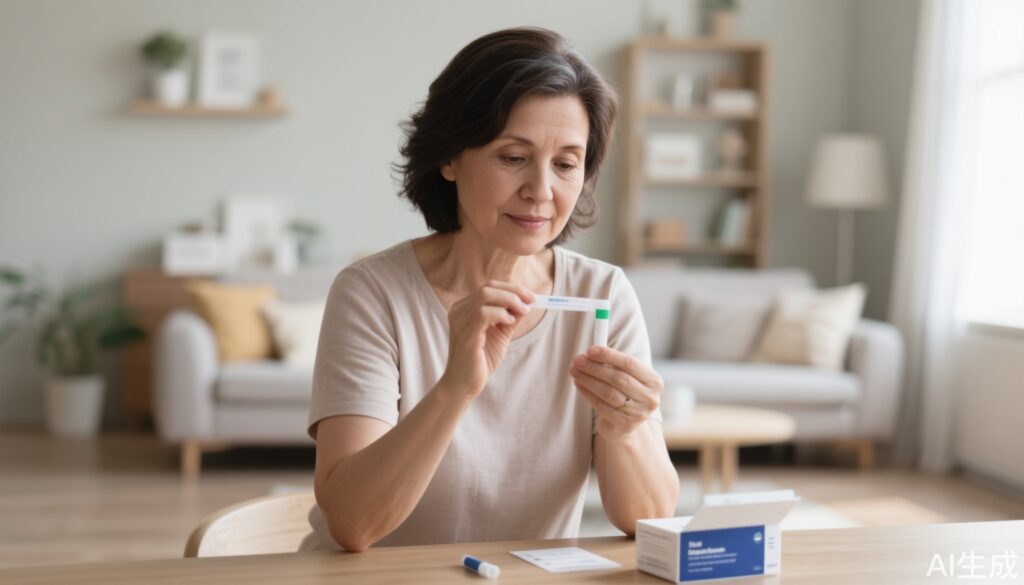The Fight Against Cervical Cancer
Cervical cancer remains a significant health challenge worldwide, despite being one of the most preventable cancers. Early detection through regular cervical cancer screening (CCS) plays a critical role in reducing the disease’s impact. However, many women, especially those in underserved communities, face barriers to accessing traditional screening methods. A recent study published in JAMA Internal Medicine highlights a groundbreaking solution: mail-in self-collection tests for human papillomavirus (HPV), the primary cause of cervical cancer. This approach has shown remarkable potential in boosting CCS participation rates, thereby enhancing early detection efforts.
Scientific and Clinical Evidence: What the Data Tell Us
The study analyzed the effectiveness of mail-in HPV self-collection kits in increasing CCS rates among underserved populations. Participants included women aged 30 to 65 years who had not undergone CCS in the past 3.5 years. They were randomized into three groups: a telephone reminder group (TR), a group that received both a telephone reminder and a mailed self-collection kit (SC), and a third group that received the kit along with patient navigation support (SC+PN).
The results were striking:
– CCS participation rates doubled in the SC group (41%) compared to the TR group (17%).
– Rates further increased to 47% in the SC+PN group, demonstrating the added benefit of personalized guidance.
– Among those who used the self-collection kits, 84.6% successfully returned their samples for analysis.
These findings underscore the efficacy of self-collection kits in overcoming barriers to screening, such as logistical challenges and personal discomfort associated with clinic-based testing.
Breaking Down Barriers to Screening
Several factors contribute to low CCS rates, including limited access to healthcare facilities, cultural stigma, fear of discomfort, and lack of awareness about cervical cancer risks. Mail-in self-collection kits address these issues by enabling women to collect samples in the privacy and convenience of their homes. The kits used in the study included detailed instructions and user-friendly tools, ensuring that participants could perform the procedure accurately and safely.
Moreover, the inclusion of patient navigation support further enhanced participation. Trained navigators provided education, reminders, and assistance in understanding test results, reducing anxiety and confusion that might otherwise deter follow-up care.
Interpreting the Test Results
Of the returned kits, 80.6% yielded negative results, providing reassurance to participants. Among positive cases, 1.2% tested for high-risk HPV types (HPV-16 or HPV-18/45), while 12.6% had other high-risk HPV types. These findings highlight the self-collection test’s ability to identify individuals at higher risk, facilitating timely intervention. Follow-up completion rates were notable, with 61.1% in the SC group and 68.8% in the SC+PN group attending subsequent clinical evaluations.
Expert Insights and Future Implications
Dr. Jane Montealegre, a key researcher in the study, emphasized the transformative potential of self-collection testing in reducing cervical cancer disparities. “By removing barriers, we are hopeful that we can improve the uptake of evidence-based screening tests and make significant progress against this preventable disease,” she noted.
The implications of this study extend beyond cervical cancer. The success of self-collection kits could serve as a model for other preventive health measures, fostering greater inclusivity and accessibility in healthcare delivery.
Conclusion: A Step Forward in Preventive Healthcare
The introduction of mail-in HPV self-collection tests represents a significant advance in the fight against cervical cancer. By empowering women to take charge of their health, these kits have the potential to save lives and reduce the burden of a preventable disease. As healthcare systems explore innovative solutions to improve access and equity, self-collection testing stands out as a promising strategy to bridge gaps and promote better health outcomes for all.
References
- Mailed self-collection HPV tests boost cervical cancer screening rates. University of Texas MD Anderson Cancer Center. June 6, 2025. Accessed June 18, 2025. https://www.eurekalert.org/news-releases/1086501.
- Montealegre JR, Hilsenbeck SG, Bulsara S, et al. Self-collection for cervical cancer screening in a safety-net setting. JAMA Intern Med. 2025. doi:10.1001/jamainternmed.2025.2971



